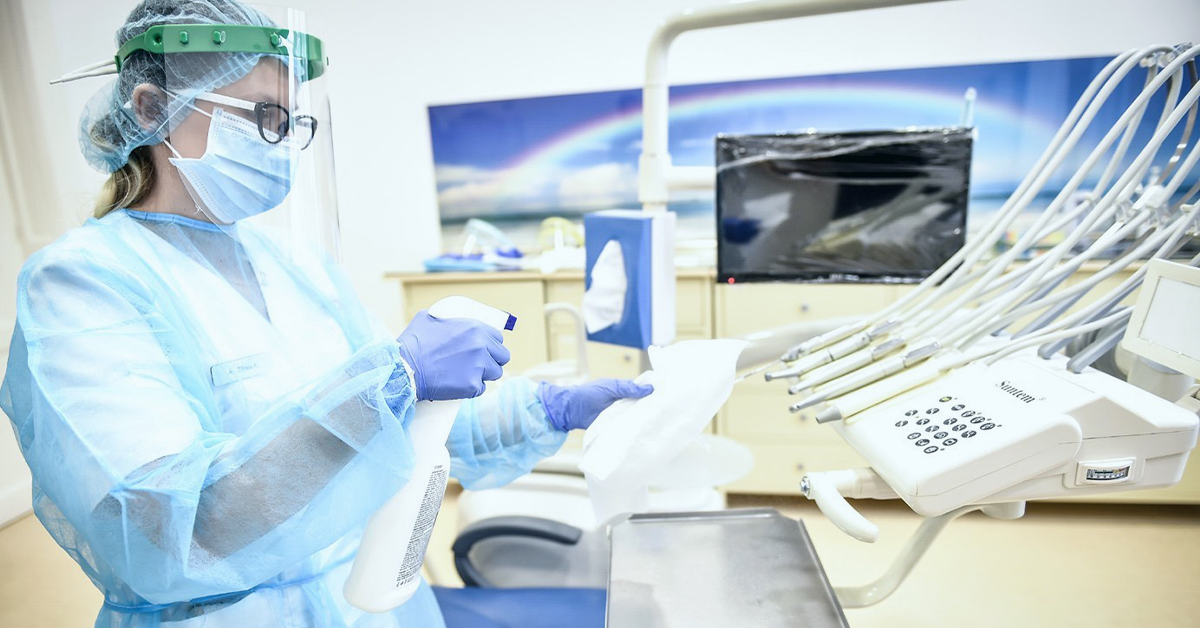Infection control and adherence to strict regulations are critical components in the success of a dental practice. It is up to dental office leaders to create and sustain a culture of safety involving the entire dental team.
Culture of safety
The spread of the COVID-19 virus has caused us to consider infection control in every domain of life. Every person has a responsibility to adopt best practices to keep our homes, schools and workplaces free of disease. However, in the field of dentistry, this has always been the goal. A truly safe and healthy office begins with a culture of workplace safety, which, in turn, emerges from a core set of principles about your practice’s values – in this case, keeping people safe from harm and infection. Leadership should establish foundational principles that represent the intersection of professional standards and personal ideals and values. Once in place, the practice team should work together in support of these ideals and develop the right policies and practices to make them operational.

Division of labor
Although infection control is a team effort, one individual – doctor or team member – should be the designated Infection Control Coordinator (ICC). This individual accepts responsibility for critical aspects of office safety, including developing a protocol that abides by evidence-based public health guidelines, keeping up on regulations, overseeing HR tasks like current immunizations for staff and maintaining records. The individual also must have special training in line with the specifications outlined by the Organization for Safety, Asepsis and Prevention (OSAP), as well as the Department of Labor’s Occupational Safety and Health Administration (OSHA).
The ICC should be a member of OSAP and attend its annual conference. OSAP provides webinars and CE opportunities, access to the Journal of Dental Infection Control and Safety and links to OSHA guidelines as well as the Centers for Disease Control and Prevention (CDC) summary, checklist and mobile app for dentistry. OSAP also is a resource for finding consultants and educators who will come and work with the ICC to develop a culture of safety.
Both the OSAP and OSHA websites now feature detailed and comprehensive guides (in English and Spanish) to managing workplace safety during the COVID-19 pandemic. These should be consulted daily by all team members as offices closely follow any state government mandates and guidelines.
A good safety officer doesn’t just go through the motions but instead goes above and beyond to ensure regulations and policies are clearly communicated and that staff have the tools they need to adhere to them. To be effective, the ICC needs adequate opportunities for continuing education, full trust and support of management, access to current and relevant publications and opportunities to network.
In a culture of safety, the role of the ICC is less about policing staff and more about serving as a resource for everyone in the practice, from doctors to team members. While the ICC is the team leader in infection prevention, and the dentist is ultimately the one liable, a genuine culture of safety means that all team members take pride in and responsibility for upholding best practices. General accountability means that every person is responsible to all others for upholding infection prevention protocols, reporting breaches and concerns to the ICC and staying up to date on regulations and best practices.

Good intentions are not enough
Even with the best intentions, maintaining a robust and safe environment does not come without challenges. The two enemies of a culture of safety are 1) complacency and 2) mixed messages. Does the team have a false sense of security, or does a high team member turnover leave inadequate time for site-specific OSHA training? Does the team prefer to leave “all that safety stuff” to the ICC?
It also is important to consider the general office atmosphere between managers and team. Does management talk about “commitment” and emphasize “safety,” yet they do not empower team members to raise safety questions or concerns? Do punitive sick leave policies and discouraging comments from managers keep team members from staying home when they are sick? Certain behaviors can undermine your commitment to a culture of safety. As we are currently in a public health crisis, now is the time to review relevant policies and attitudes to boost team satisfaction and morale.
Best practices are built on trust and commitment
The bottom line is when the doctor and team members share a commitment to ensuring the safety of the workplace for all who enter – including the doctor, team and patients – they are better able to nurture a culture of safety. If this culture is supported by an atmosphere of open communication, mutual respect and accountability, the dental office is sure to be a safe space where trust and commitment are the only things that are truly “infectious.”
Selected references
Culture of Safety (Dimensions of Dental Hygiene)
Roles of the Infection Control Coordinator (Inside Dentistry)
Every Practice Needs an Infection Control Coordinator (DentistryToday)
– – –
This blog post originally appeared in Best Practice.





You must be logged in to post a comment.